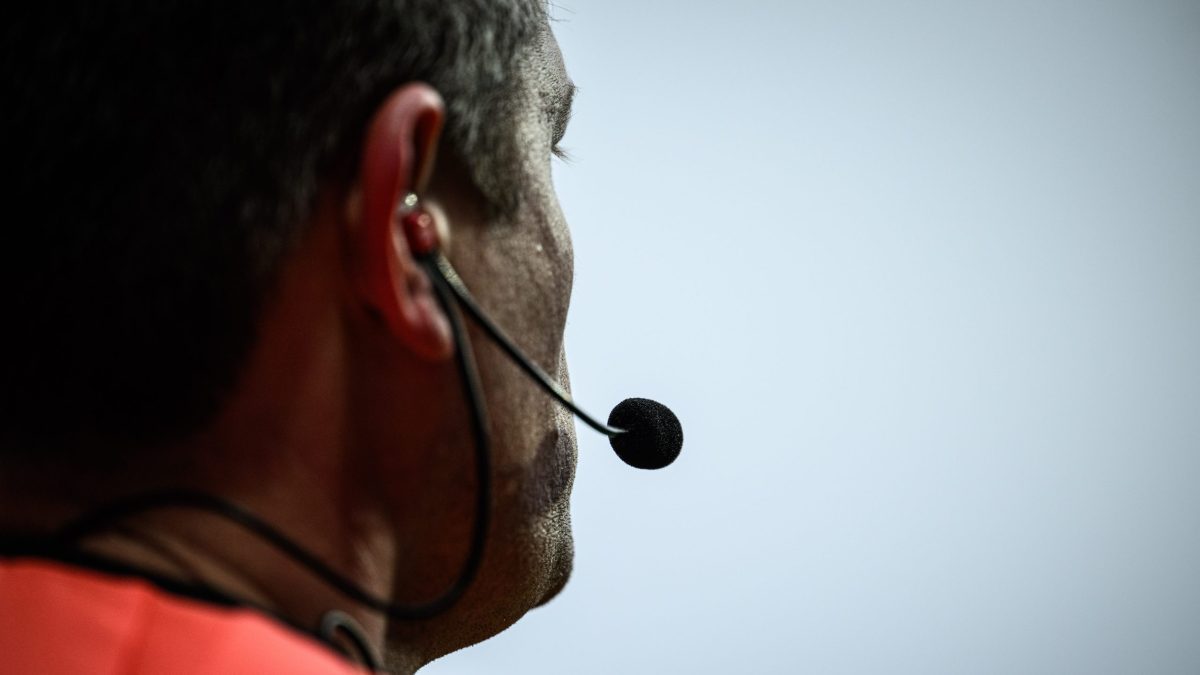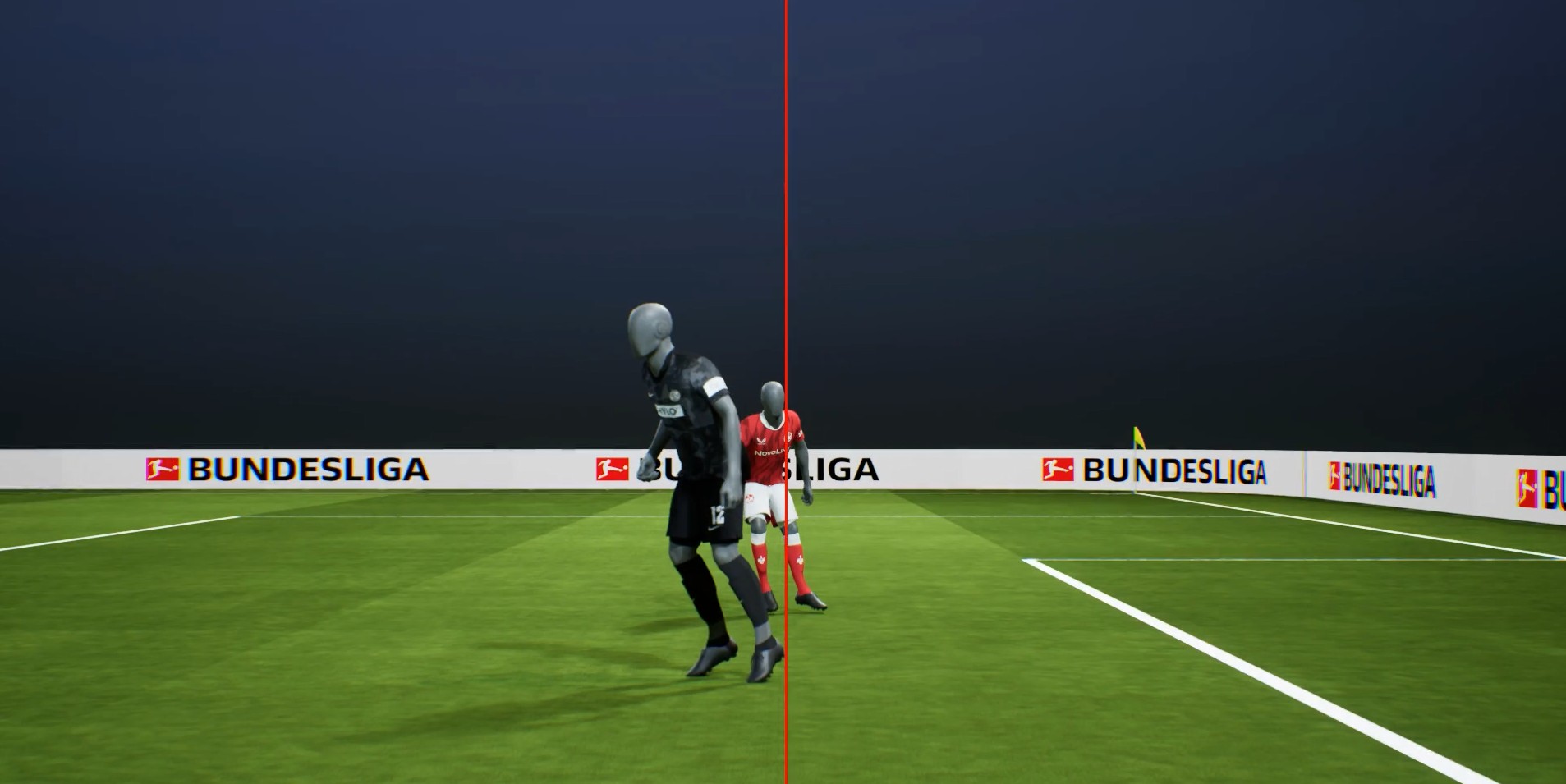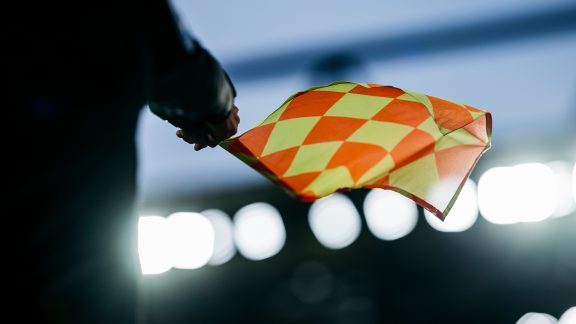Referee announcements, player tracking, offside detection: changes for the 2025-26 season

31 July 2025 – In the Bundesliga and Bundesliga 2, there will be several changes to the collection and evaluation of position data as well as the work and communication of referee teams in the new 2025-26 season.
Referees to announce their decisions in the stadium
The announcement of referees’ decisions will be extended to all Bundesliga and Bundesliga 2 stadiums in the 2025-26 season. Following the positive results of a pilot project in nine stadiums in the second half of last season, which received overwhelmingly positive feedback from fans and media partners, the technical requirements are currently being put in place at all 36 venues. In the Bundesliga, referees will explain their decisions from the first matchday (22 to 24 August), and in the Bundesliga 2 from the ninth matchday (17 to 19 October).
The referee will always address the crowd when he has been to the review area at the edge of the pitch to check a decision on the monitor – or when he changes a decision on the advice of the video assistant referee (VAR). The announcement will be made via the referee’s headset microphone and will be heard over the stadium loudspeakers, informing the audience which incident has been reviewed, what the outcome of the review was and what the final decision is. The announcement will also be integrated into the live broadcast by the media partners.
In addition, the RefCam will be used more frequently in the new season. This is a small special camera that the referee wears on pitch. Subject to approval by the International Football Association Board (IFAB), footage from the referee’s perspective will be available in selected matches.
New handshake dialogue: meeting between captains, coaches and referees
At the suggestion of the DFL Football Commission, there will now be a short meeting between the refereeing team and the coaches and captains of both teams before every kick-off in the Bundesliga and Bundesliga 2. In the spirit of fair play, this meeting serves as an opportunity for mutual exchange and respectful interaction between all those involved in the game. The meeting will take place 70 minutes before kick-off in the referees’ dressing room.
Semi-automated offside technology
A technological innovation that will enable faster review of possible offside positions is semi-automated offside technology (SAOT). From the start of the season, it will make the work of referee teams in the Bundesliga and Bundesliga 2 easier by helping to speed up the review of potential offside positions when goals are scored.
SAOT is based on data captured by high-resolution special cameras in the stadiums. These cameras are capable of tracking the movements of the players and the ball in real time. Artificial intelligence analyses this data to calculate the exact positions of the players and the ball. Based on this data, moments of play and potentially punishable offside positions are automatically detected. Based on this, a virtual offside line is created, which is reviewed by the VAR. The VAR then relays the decision to the referee on the field. The results of the offside detection can be displayed graphically in the television signal to ensure transparency regarding the decision.

Three-dimensional tracking
A prerequisite for semi-automatic offside detection is a change in the way position data is collected. Whereas previously the position of each player and the ball was represented by a single point on a two-dimensional pitch, the new tracking technology will provide three-dimensional movement data for 21 points on each player’s body, including the head, shoulders, knees and feet. This data is crucial for determining whether a player is offside.
The tracking data is also used to generate real-time information on the speed, acceleration, changes of direction and specific movements of the players. This information is then used as a basis for analysis, tactics and training.
Redefining speed ranges
Starting next season, the definitions of the various speed zones and the definition of a sprint, which are recorded by the DFL as part of the official match data, will be adapted to international standards. This adjustment is being implemented at the initiative of the clubs’ athletic trainers and match analysts for the new season and takes into account the fact that the athleticism of the game has evolved. At the same time, the DFL is increasing the comparability of official match data from the Bundesliga and Bundesliga 2 with data from other leagues, associations and leading data providers.
From the 2025-26 season onwards, a player’s playing time and running distance will be divided into the following adjusted speed zones:
- Standing: 0–1 km/h
- Walking: >1–7 km/h
- Jogging: >7–15 km/h
- Low-Speed Running: >15–20 km/h
- High-Speed Running: >20–25 km/h
- Sprinting: >25 km/h
Runs in the “Sprinting” and “High-Speed Running” speed zones will now be recorded as game events if a player is tracked for at least 0.5 seconds in the respective speed range. Due to the changes in definition, the number of sprint events recorded is expected to decrease by about one third compared to the previous definition. The number of high-speed runs, on the other hand, is estimated to increase by a single-digit percentage.

